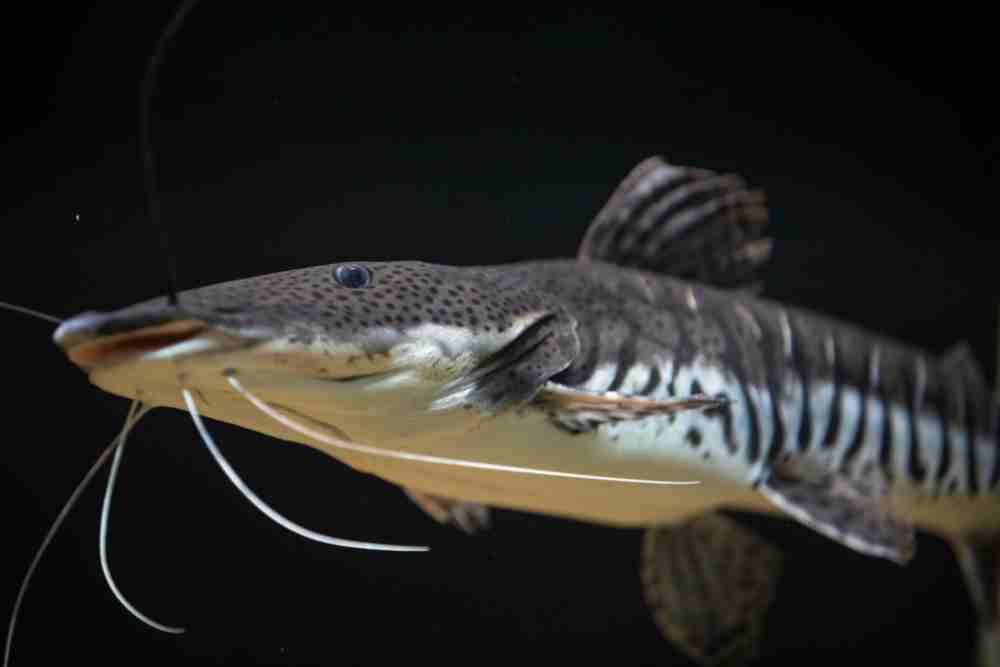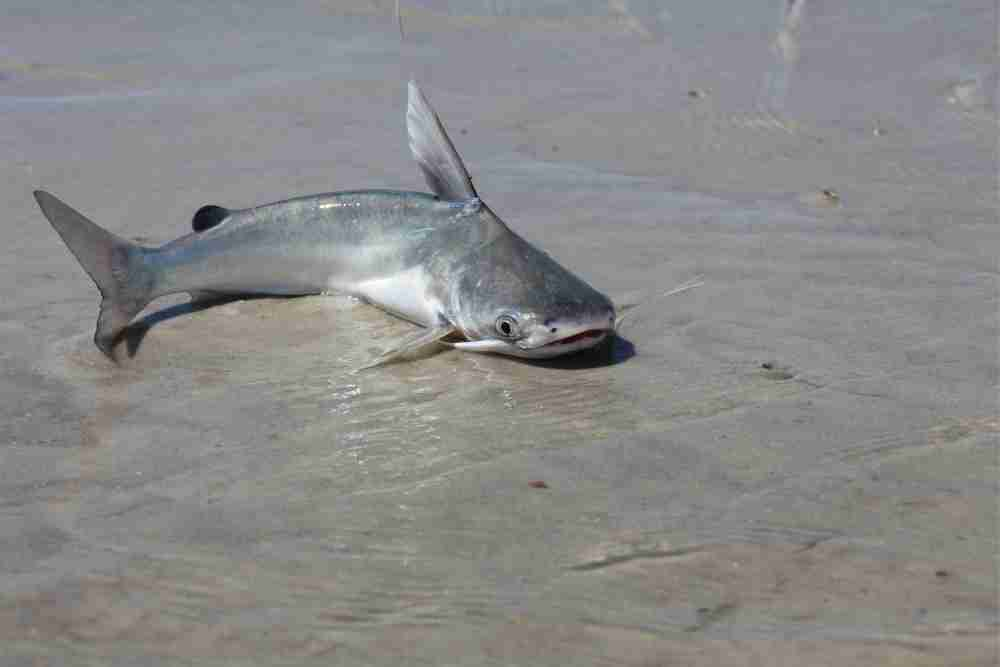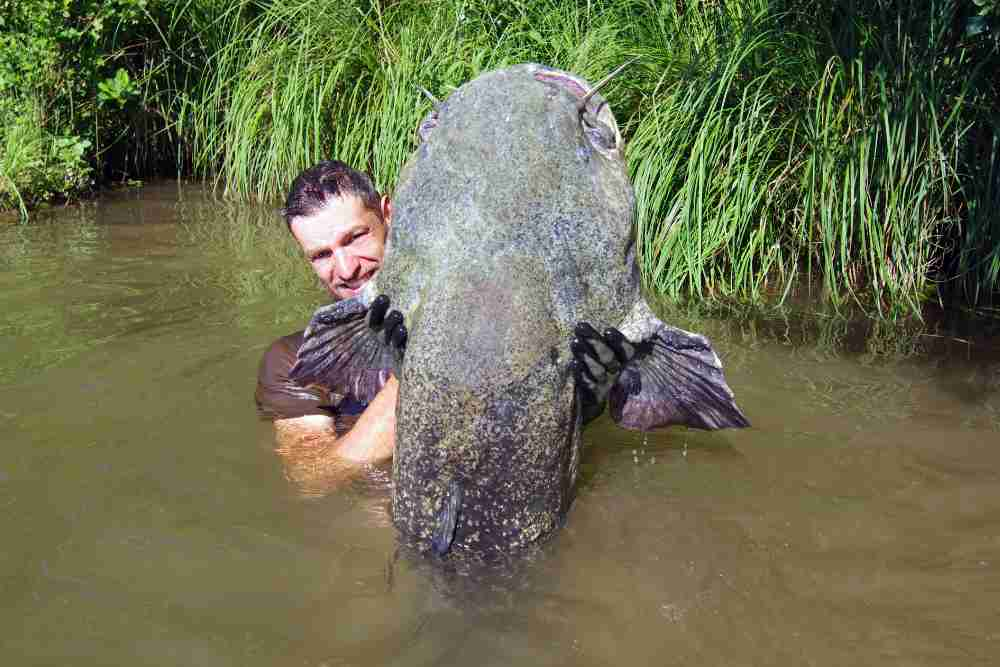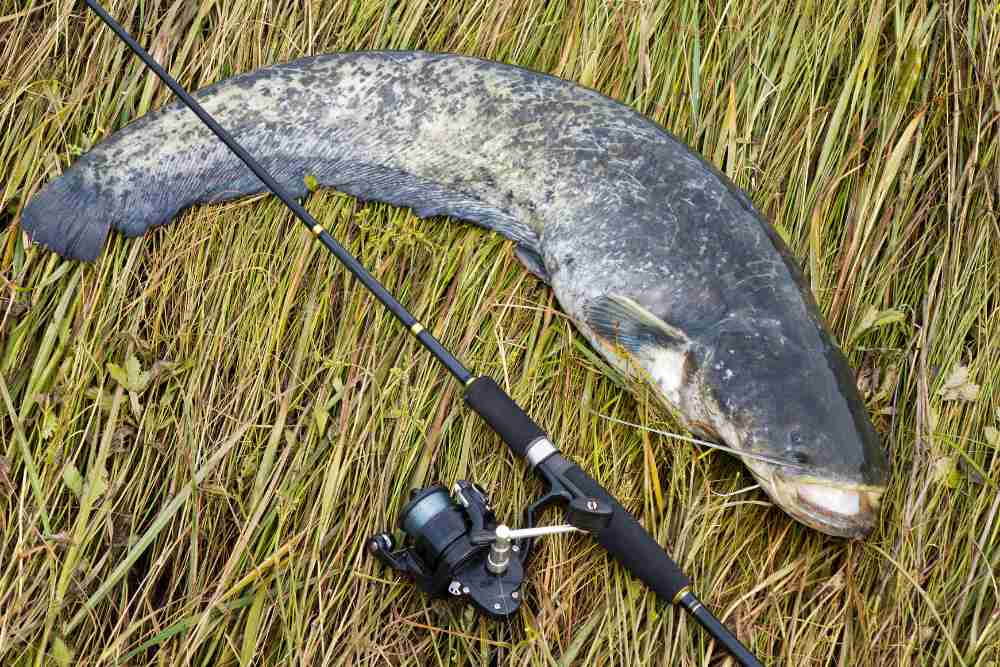Freshwater catfish are mysterious creatures that inhabit rivers, lakes, and ponds around the world. While they may not be as well-known or glamorous as their saltwater counterparts, these bottom-dwelling fish have some surprising and fascinating characteristics.
From their unique physical adaptations to their diverse feeding habits, freshwater catfish continue to captivate the curiosity of scientists and nature enthusiasts alike.
In this article, we will delve into the incredible world of freshwater catfish and uncover some remarkable facts about these often-overlooked aquatic creatures.

8 Surprising Facts About Freshwater Catfish
1. Scaleless
Catfish are scaleless fish. Unlike many other fish species, catfish do not have scales covering their bodies.
Instead, they have smooth, slimy skin that is often covered in mucus. This adaptation is typical of most catfish and allows them to thrive in various aquatic environments.
Because of their scaleless skin, catfish are more sensitive to changes in their environment, such as water quality and temperature.
As a result, they tend to prefer habitats with muddy or sandy bottoms, as these areas offer protection and concealment.
2. Whisker-Like Barbels

Catfish have whisker-like barbels around their mouths. These barbels are one of their most distinctive features and play a crucial role in their feeding and sensory abilities.
The barbels are elongated, fleshy structures that resemble whiskers, hence the name. They are located near the mouth and vary in number depending on the catfish species.
These barbels are highly sensitive to touch and contain numerous taste buds and olfactory receptors, allowing catfish to gather information about their environment and potential food sources.
With the help of their barbels, catfish can detect vibrations and changes in water movement, which helps them locate prey, even in dark or murky waters.
The sensitive taste buds on the barbels allow catfish to taste their food before consuming it, aiding in their scavenging behavior.
The size and shape of the barbels can differ significantly among various catfish species.
Some catfish have long and thin barbels, while others may have short and stubby ones. These adaptations are related to their feeding habits and the specific environments they inhabit.
3. Nocturnal
Catfish are primarily nocturnal fish, meaning they are most active during the nighttime hours. Their behavior is adapted to thrive in low-light or dark conditions, and they exhibit distinct feeding and activity patterns that are more prevalent at night.
Several factors contribute to catfish being nocturnal:
Predation avoidance: Being active at night can help catfish avoid predators that are more active during the day. By staying hidden and less exposed during daylight hours, they can reduce the risk of becoming prey.
Feeding behavior: Catfish are opportunistic feeders, and many of their preferred food sources, such as insects and small fish, are more active at night. By being nocturnal, catfish can take advantage of the abundance of prey during this time and use their excellent sensory abilities, including their sensitive barbels, to locate food in dark or murky waters.
Environmental factors: In some areas, water temperatures can be cooler at night, making it more comfortable for catfish to be active. Additionally, the cover of darkness can provide a sense of security, allowing them to explore and move around more freely.
Human disturbance: Catfish are often found in freshwater bodies of water near human populations, such as rivers, lakes, and ponds. Being nocturnal may help them avoid potential disturbances from human activities during the daytime.
Due to their nocturnal nature, catfish are often caught by anglers during the twilight hours or at night. Night fishing for catfish is a popular activity, and many anglers use special techniques and baits designed to attract catfish during their peak feeding times.
4. Unique Way of Breathing

Catfish are known for their remarkable ability to survive outside of water for relatively long periods compared to many other fish species.
This adaptation is possible due to several unique physiological features and behaviors that allow them to endure temporary periods of drought or survive in low-oxygen environments.
One significant factor contributing to a catfish’s survival outside of water is its ability to extract oxygen from the air. Catfish possess a specialized organ called the “suprabranchial chamber,” which acts as a primitive lung.
This chamber enables them to breathe atmospheric air directly, allowing them to survive in oxygen-depleted water or even out of water for a limited time.
When water conditions become unfavorable or oxygen levels drop, catfish can leave the water and move over damp surfaces, such as muddy riverbanks or wet vegetation.
They may bury themselves in mud to stay moist and protect themselves from drying out.
Catfish also have a mucous layer on their skin, which helps prevent excessive moisture loss, further aiding their ability to survive out of water for some time.
However, it’s important to note that catfish are still dependent on water for their long-term survival. While they can survive temporarily outside of water, they are not adapted for extended periods of time on land.
5. Grow Larger in Size

Catfishes have a reputation for growing very large in many species. Some catfish species are known to attain impressive sizes, making them some of the largest freshwater fish in the world.
The potential for substantial growth is one of the reasons why catfish are highly regarded by anglers and fish enthusiasts.
Here are a few examples of catfish species known for their significant size:
Mekong Giant Catfish (Pangasianodon gigas): This is one of the largest freshwater fish species on Earth. Native to the Mekong River basin in Southeast Asia, the Mekong Giant Catfish can reach lengths of over 9 feet (2.7 meters) and weigh up to 660 pounds (300 kilograms). Due to overfishing and habitat destruction, this species is critically endangered.
Wels Catfish (Silurus glanis): Native to Europe, the Wels Catfish is another formidable giant. It can grow to lengths of up to 13 feet (4 meters) and weigh several hundred pounds. While not as endangered as the Mekong Giant Catfish, the Wels Catfish faces conservation concerns in some regions.
6. Popular Game Fish

Catfish are indeed popular game fish, sought after by anglers for their size, strength, and challenging fight when hooked.
While catfish may not be as well-known as some other game fish like bass or trout, they have gained significant popularity among fishing enthusiasts in many parts of the world.
Catfish are known for their impressive size, with some species growing to enormous proportions. It’s not uncommon to find catfish that weigh several pounds or even exceed a hundred pounds in some cases.
Their substantial weight and powerful swimming ability make them formidable opponents for anglers, providing an exciting and rewarding fishing experience.
One reason for their popularity as a game fish is that catfish can be found in a wide range of freshwater habitats, including rivers, lakes, reservoirs, and ponds.
They are also known to thrive in both warm and cool water, making them accessible to anglers throughout different seasons of the year.
Catfish are opportunistic feeders, which adds to their appeal as a game fish.
They will consume a variety of baits, including live and dead bait such as worms, minnows, and other small fish, as well as prepared baits and artificial lures designed to attract them.
This versatility in feeding habits allows anglers to employ various fishing techniques to target catfish successfully.
In addition to their sporting qualities, catfish are also valued for their delicious meat. Many anglers enjoy catching catfish not only for the thrill of the chase but also for the opportunity to take home a tasty meal.
The combination of their size, strength, widespread distribution, and diverse feeding habits has contributed to making catfish a popular and sought-after game fish among anglers around the world.
7. Unique Defense Mechanism
Catfish have a unique defense mechanism in the form of sharp, spiny rays on their dorsal and pectoral fins. These spines can be used to defend themselves against predators or fishermen.
They have spiny and pointed rays in their pectoral and dorsal fins. These fin rays are essential features that help to distinguish catfish from other types of fish.
The pectoral fins are located on the sides of the catfish, behind the gill openings. They play a crucial role in stabilizing and maneuvering the fish as it swims. In catfish, the first ray of the pectoral fin is often serrated and can be sharp and spiny.
This serrated ray acts as a defense mechanism, allowing the catfish to protect itself from potential threats or predators.
The dorsal fin is located on the top of the catfish’s body, along its back. It also provides stability and helps the fish maintain its position in the water.
Similar to the pectoral fins, the first ray of the dorsal fin in many catfish species can be spiny and pointed. This adaptation can serve as a deterrent against predators and aid in territorial displays or interactions with other catfish.
The spines on the pectoral and dorsal fins of catfish are not only used for defense but can also be harmful to humans if handled carelessly. Some catfish species have venomous spines, which can cause painful stings and reactions if they pierce the skin.
As a result, anglers and people handling catfish should exercise caution to avoid injury.
8. Scavenging Nature

Catfish are known as bottom-dwelling and scavenger fish. These characteristics are essential aspects of their behavior and ecological role within aquatic ecosystems.
Catfish have adapted to life near or on the bottom of bodies of water. They prefer to inhabit areas with muddy or sandy substrates, where they can find shelter and protection.
Their flattened bodies and downward-facing mouths are well-suited for searching and feeding on the bottom.
By staying close to the bottom, catfish can also avoid strong currents and predators that may lurk in open water.
Catfish are opportunistic feeders, and they are highly skilled scavengers. As bottom-dwellers, they have access to various food sources that settle on the lake or riverbed, such as decaying plants, dead animals, and other organic matter.
They use their sensitive barbels to detect food and consume a wide range of items, from small aquatic invertebrates to larger prey, like dead fish or other carrion.
While catfish primarily scavenge for food, they are not purely reliant on this diet. They will also actively hunt for live prey, such as small fish, insects, and crustaceans.
Their ability to switch between scavenging and hunting makes them versatile and adaptable predators, contributing to their success in various aquatic environments.
The scavenging nature of catfish is significant ecologically as well. They help to clean up and recycle nutrients in the water by consuming decaying matter, which can contribute to maintaining a healthier aquatic ecosystem.
FAQs
Are all catfish species safe to handle?
While most catfish are generally safe to handle, some species have sharp spines on their fins that can cause painful stings or wounds.
Certain catfish, like the freshwater catfish in the genus Corydoras, have venomous spines that can cause localized discomfort. It’s essential to handle all catfish with care and avoid their spines to prevent injury.
Can catfish survive in aquariums?
Yes, many catfish species can thrive in aquariums when provided with suitable conditions. However, their specific requirements, such as tank size, water parameters, and compatible tankmates, will vary depending on the species.
Researching the specific needs of the catfish you plan to keep is essential for their health and well-being in an aquarium environment.
How do catfish reproduce?
Catfish exhibit various reproductive strategies. Most catfish are egg-layers, where the female lays eggs, and the male fertilizes them externally.
After spawning, catfish typically do not provide parental care for their eggs or fry. Some species may practice mouthbrooding, where the male incubates the eggs in his mouth until they hatch.
Can catfish survive in polluted water?
Catfish are known for their tolerance to various environmental conditions, including polluted or low-quality water. They can withstand low oxygen levels and poor water quality better than many other fish species.
However, prolonged exposure to highly polluted water can be harmful to catfish and negatively impact their health and survival. It is crucial to maintain clean and healthy aquatic environments to ensure the well-being of all aquatic organisms, including catfish
11 thoughts on “8 Surprising Facts About Freshwater Catfish”
Comments are closed.